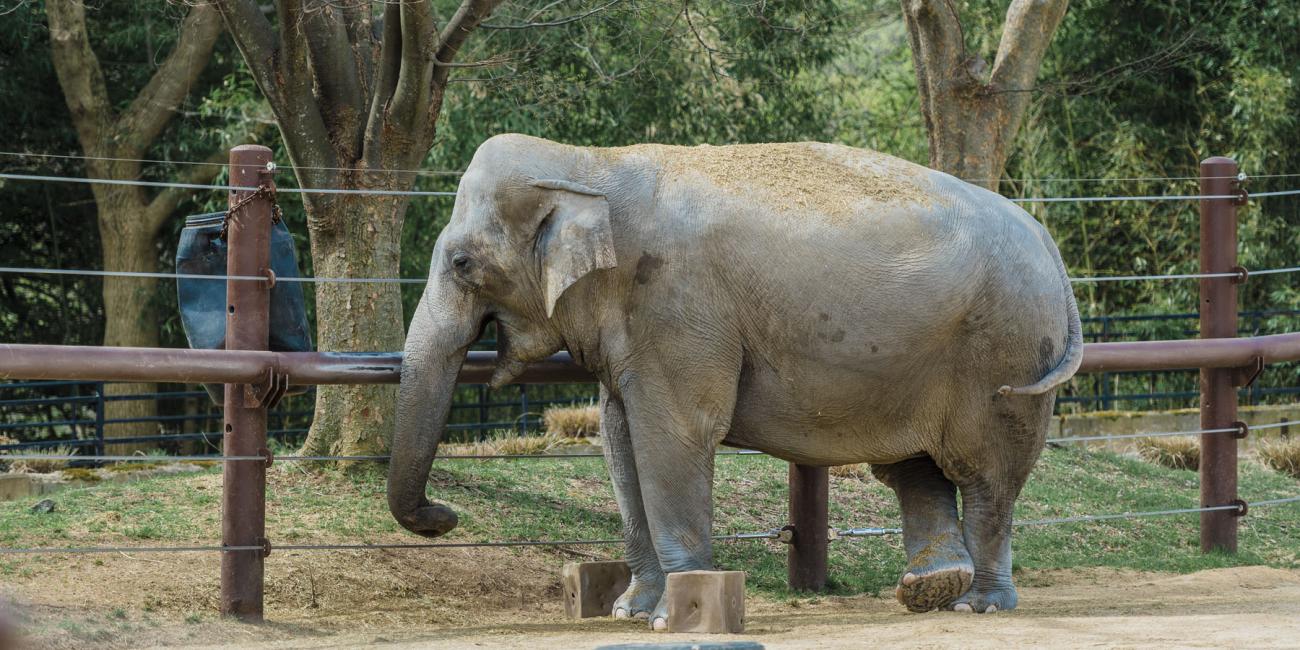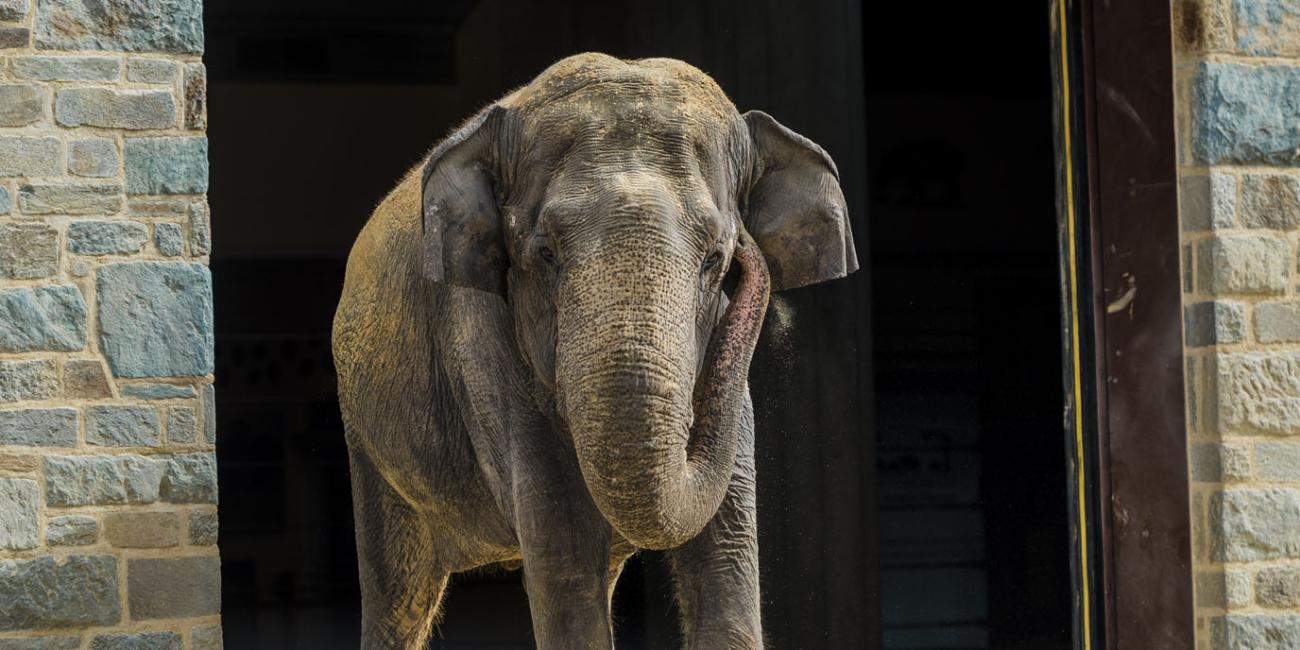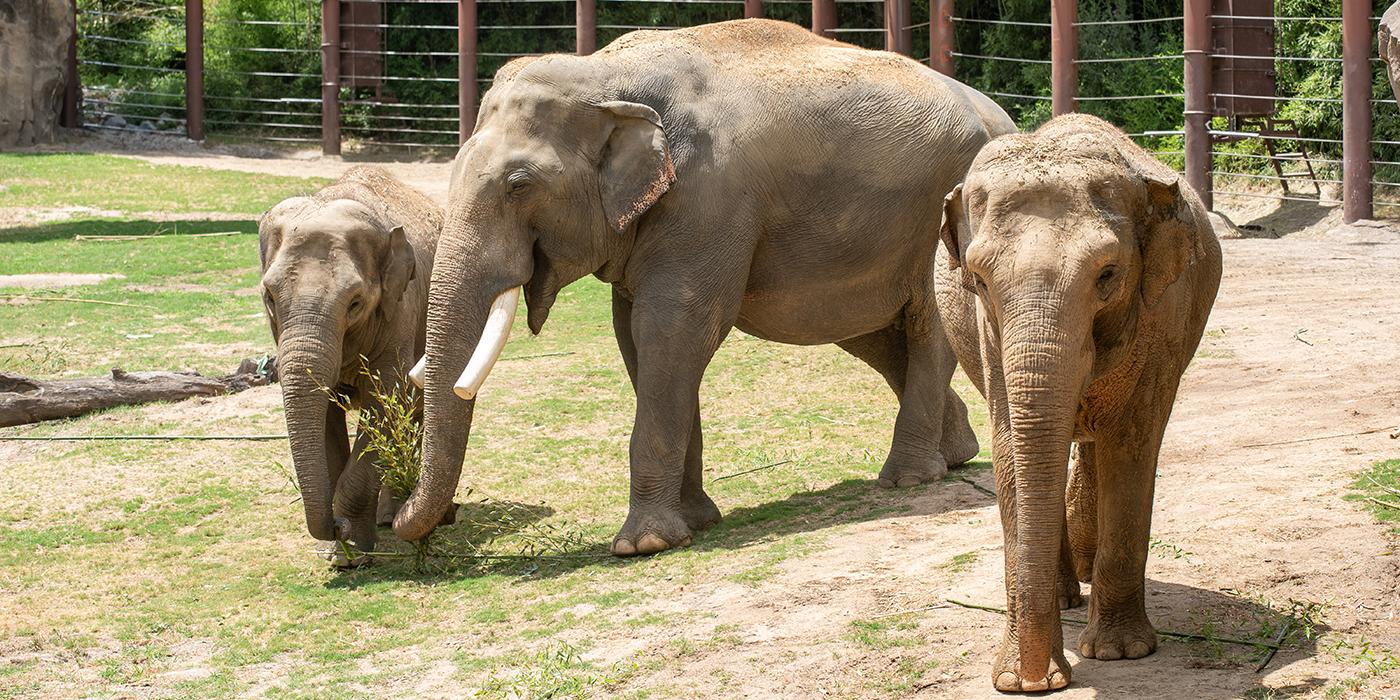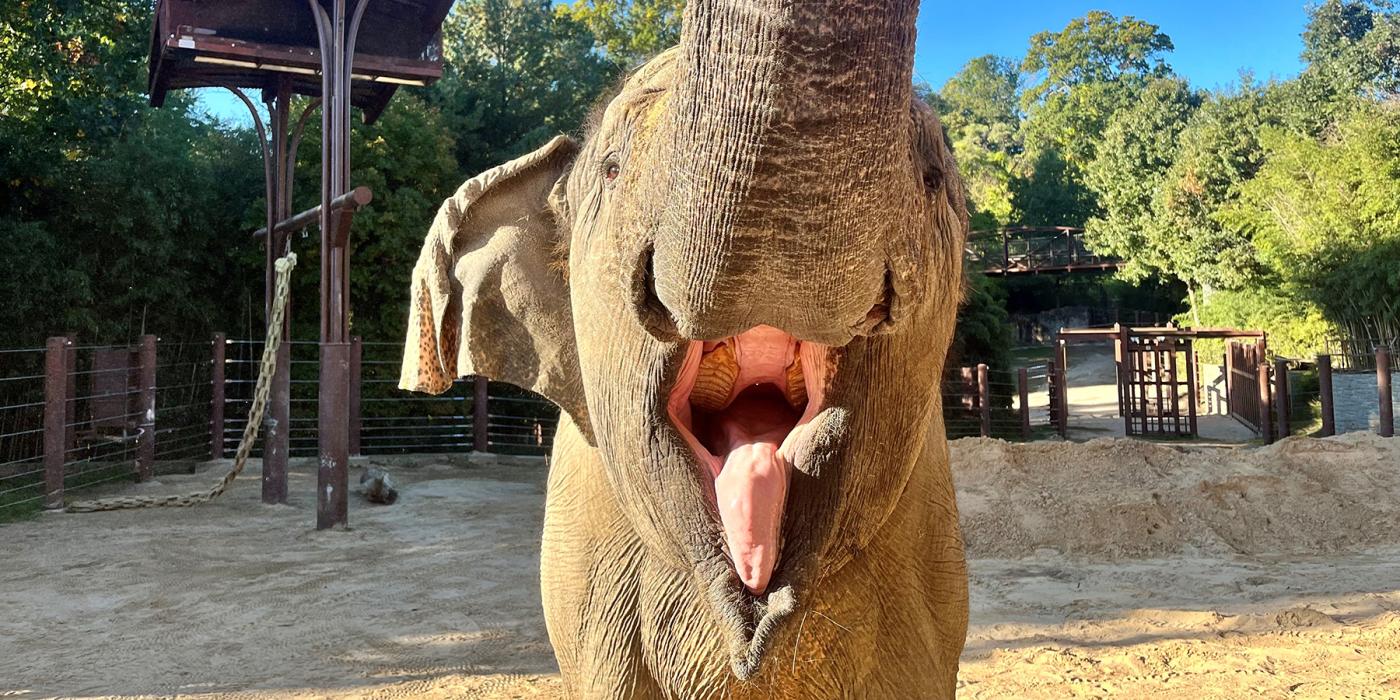Pachyderms by the Pound
If Smithsonian Conservation Biology Institute (SCBI) endocrinologist Janine Brown could make a New Year’s resolution on behalf of North America’s elephants, it would be for them to get in shape. To better understand the role diet and exercise play in elephant health, she studied the animals’ hormones. Her findings were recently published in a PLOS-ONE paper entitled, " Metabolic health assessment of zoo elephants: Management factors predicting leptin levels and the glucose-to-insulin ratio and their associations with health parameters" on Nov. 29, 2017.
What were you trying to learn about elephant health?
For this study, we were interested in learning about elephant nutritional health and obesity by looking at their hormones—namely glucose, insulin and leptin—to see if they were normal or not.
Most people are familiar insulin, which is the hormone responsible for controlling blood glucose levels. Leptin is a hormone that is produced by fat cells. The more fat you have, the more leptin you produce. Having too much leptin can have a negative impact on a female elephant’s ovarian cycle and ability to successfully reproduce, so it is an important factor to consider.
Ultimately, our goal was to determine what the relationship is between the day-to-day care an elephant receives and these hormone levels. If we know that, then we can recommend which areas to focus on to make sure we can keep them at normal levels, thereby promoting good health and welfare.
How many elephants participated?
This study involved 87 Asian elephants and 105 African elephants living at North American zoos accredited by the Association of Zoos and Aquariums. On the whole, Asian elephants had more fat than African elephants, and males tended to be thinner than females within each species. So, not only is there a difference between the two species, but also the sexes!
Did these findings surprise you?
We found that metabolic hormones are influenced most significantly by walking and feeding practices. They are also related to fitness parameters, including reproductive cyclicity and body condition. This is not surprising since these are similar to findings in humans and other species.
Overall, our findings supported our hypothesis that a healthy diet—one low in calories and sugar—and exercise were associated with normal levels of glucose and insulin. It means that we are on the right track by encouraging elephants to exercise and eat healthy.
The caveat is that we cannot say with certainty that an elephant should walk a certain number of miles every day. The fact is that some elephants do not need encouragement to exercise, while others do. It is evident that some elephants tend to put on weight more easily than others—even if everyone gets the same amount of exercise and diets are adjusted to influence weight loss. In that way, they are just like us.
How can zoos ensure their elephants are healthy?
Keepers should tailor their enrichment and exercise programs based on what works best for individual elephants. Mixing up their daily routine is key to preventing boredom and encouraging the elephants to move.
It sounds cliché, but a well-balanced diet and plenty of exercise are the keys to good elephant health. At the Smithsonian’s National Zoo, our keepers have placed feeders at the farthest ends of the yard to encourage the elephants to explore their habitat, walk around and forage. These devices release food at random times throughout the day, encouraging the elephants to investigate the feeders and return to them multiple times throughout the day. It also breaks up the normal feeding routine and makes their day unpredictable and more interesting.
Animal keepers tend to reward elephants with a sweet treat (fruit or apple biscuits) during positive reinforcement training sessions. While it is fine for them to have these treats occasionally, for every day training sessions, we are advising keepers to use treats that are lower in calories and sugar instead, such as pumpkins and cucumbers. Because we weigh our elephants and collect blood samples on a regular basis, we will be able to keep an eye on their weight as well as their glucose, insulin and leptin levels to see how they change over time. We can also monitor if some elephants are adhering to their diet and exercise regimens better than others.
What are the next steps?
This study confirmed that measuring glucose and insulin levels are a good indicator of when an elephant is “off” health-wise, and how successful our diet and exercise programs are for individual animals. In zoos, elephants can live into their 60s and 70s, so our next step is to look at how having high glucose or insulin affects elephant health in the long-term, including their longevity.
This story appears in the February 2018 issue of National Zoo News. Smithsonian Conservation Biology Institute researcher Kari Morfeld co-authored this paper.Related Species:






